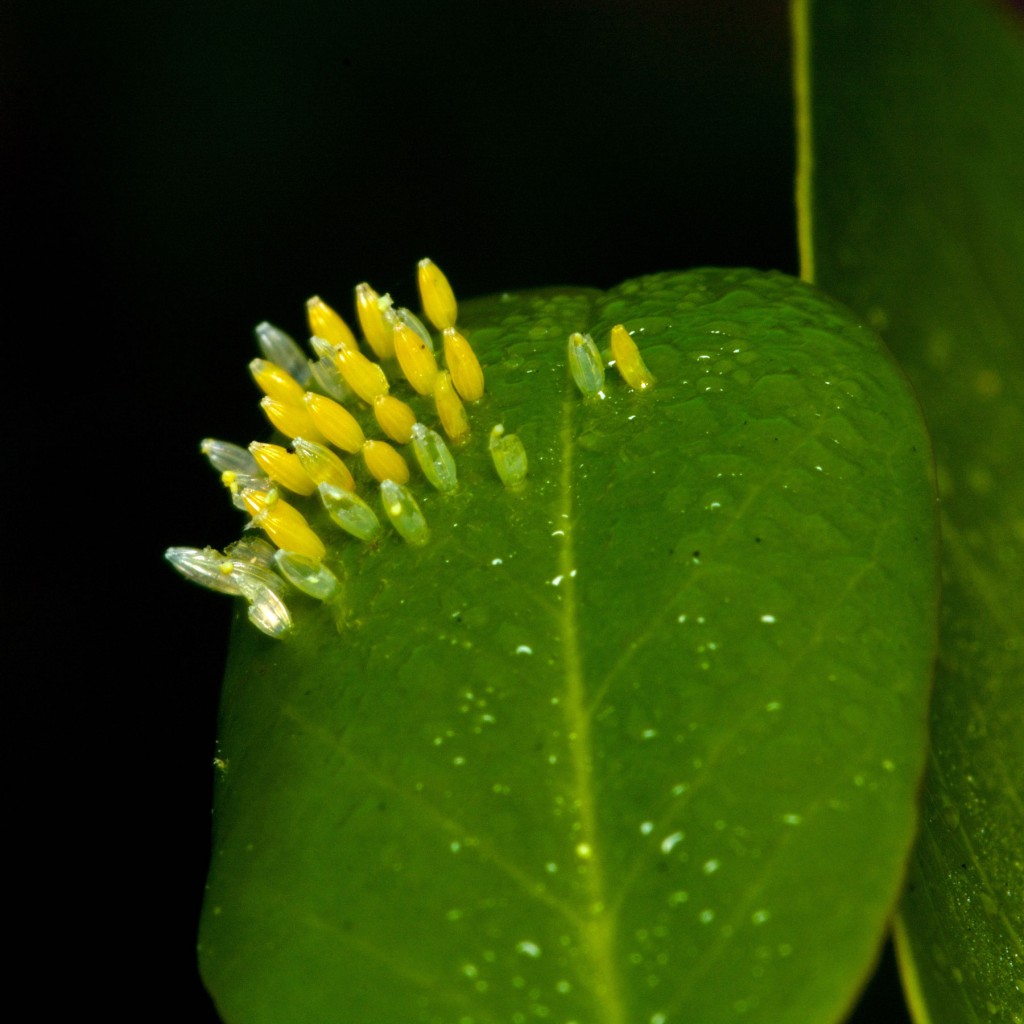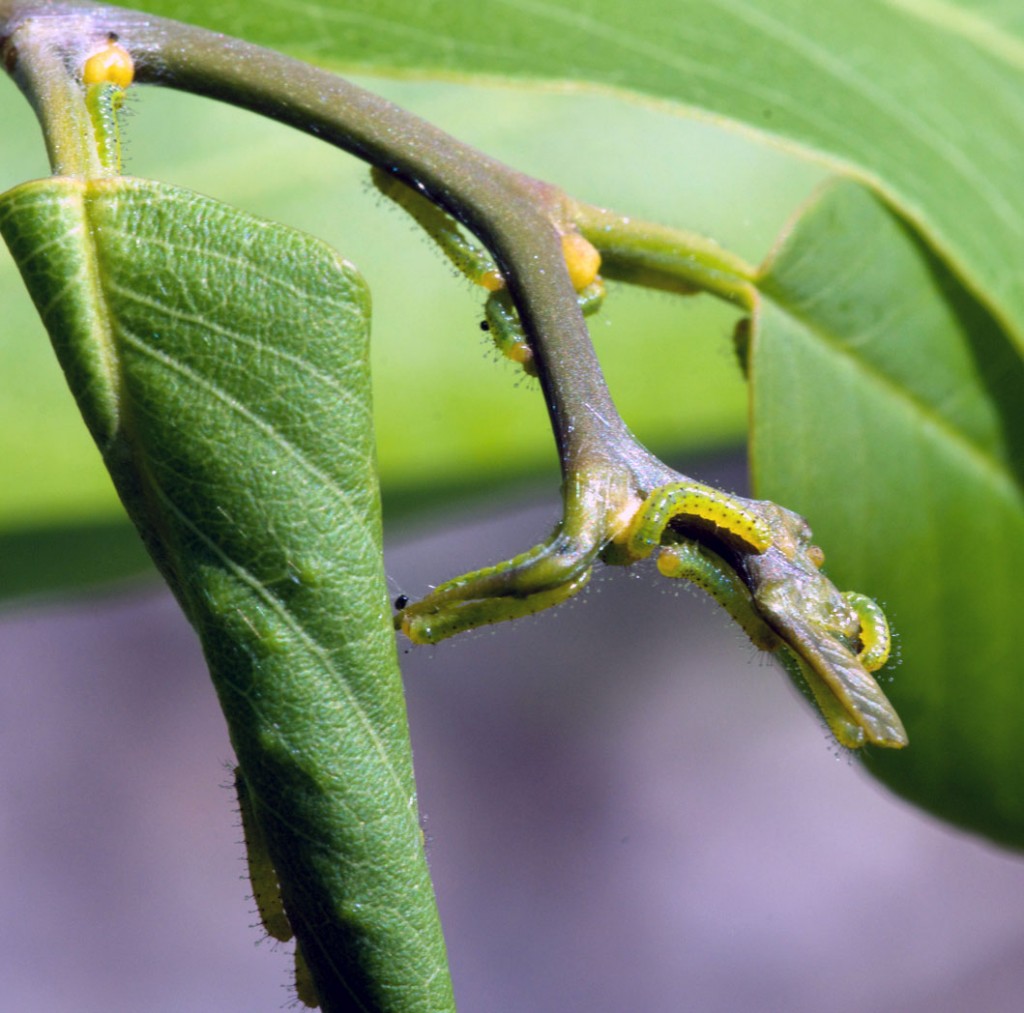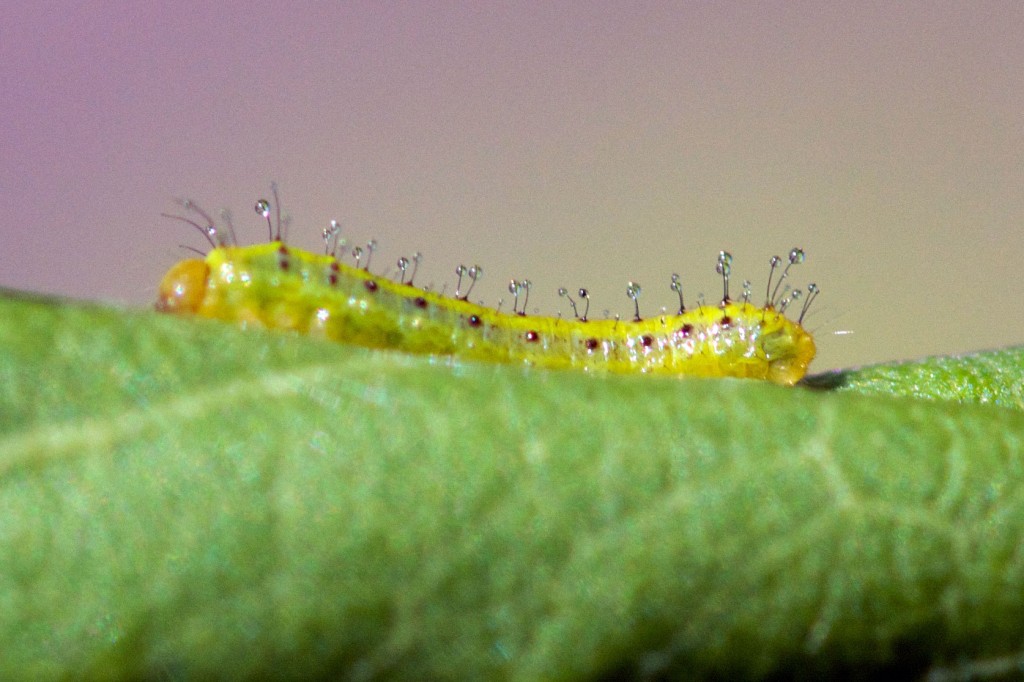I’ve been noticing some large, white butterflies in the front yard throughout the month of May; they’ve been a bit hard to photograph with the constant wind and their habit of flying off at top speed when I approach with a camera, so I’m digging into my photo files and showing this version from a January, 2008 trip to Merritt Island National Wildlife Refuge.

Now back to Boca: this June, for the first time ever, I noticed some butterfly eggs on my limber caper (Capparis flexuosa). I was surprised, because I wasn’t aware that these plants, with their incredible showy flowers, were butterfly host plants. The eggs I saw were small (as butterfly eggs are), slender, yellow, and laid out in attractive little bunches on the leaves.
Most butterfly eggs are laid on the bottom of the leaf surface, to protect the developing larva from the sun and, I don’t know, lazy predators who don’t know how to cruise the underside of a leaf? But what caught my eye this fine morning was a cute little bunch of eggs on the top surface of a tender young leaf:

The yellow-and-white pattern was rather striking. It turns out that the yellow was made up of still-occupied eggs, and the white was just the reflection through the translucent remains of some “hatched-out” eggs (eclosed, in technical parlance). These eggs were so small that I really had no idea what I was looking at until I brought the camera inside and looked at the photos on the computer screen. It was only then that I discovered that they were butterfly eggs and not, as I’d first suspected, stink bug eggs, which are also laid in geometric patterns.
Once I found out they were caterpillar eggs, I needed to figure out what species they might be. That part was easy: just consult Marc Minno’s book on Florida butterfly caterpillars and see which butterflies use Limber Caper as a host plant. Turns out there are only two, Florida White and Great Southern White. And the Florida White’s eggs are white, not yellow. Case closed!
But, I reasoned, since in this group there were some occupied eggs and some eclosed eggs, there must have been some caterpillars on this here plant that I missed when I was photographing the eggs. So I went back outside to try to find them. And sure enough, I found a whole little community of tiny caterpillars doing their thing:

They appeared to be busily occupied constructing a little shelter for themselves out of silk, presumably to protect themselves from the numerous ants, lacewings, and other predators in the well-tended garden. (I noticed several lacewing eggs on other parts of this bush.)
The caterpillars are quite interesting, with numerous “spikes” (setae), most of which seem to be growing out of the numerous small black sp0ts that adorn the caterpillar’s back. It’s green and yellow, at least this early in life (first instar); Minno describes the body of later instars as “gray with yellow stripes.” Apparently the back of the caterpillar has short tails, but I’ve been unable to discern any in the photos I’ve taken so far. Also, it seems that the caterpillars—which right now appear to be quite social, feeding and hanging out together—start to disperse as they mature, rather like human children.
Here’s a solo shot:

I’m not quite sure what the droplets on the end of their hairs might be; there was no rain this morning and I hadn’t even watered the plants as I often do early in the rainy season when, as now, we’ve been without rain for a few days. I’ve posted a question on my go-to site for insect identifications, bugguide.net, and will update this post if I hear anything back.
If you’re interested in learning more about these butterflies, the Miami Blue chapter of the North American Butterfly Association has a nice write-up on their website.
References
Minno, M., J. Butler, & D. Hall. (2005). Florida butterfly caterpillars and their host plants. Gainesville, FL: U of Florida P.
